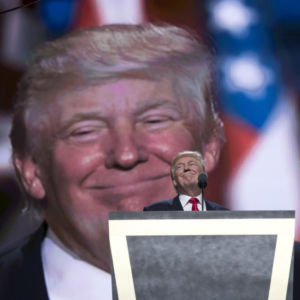President-elect Donald Trump won considerable working class support but his incoming presidency poses a huge setback for unions.
Democratic candidate Hillary Clinton won overwhelming support from the labor movement during the election. Labor unions campaigned for her and donated heavily to her campaign. Her loss likely means the rollback of regulations unions support and a further decline in their membership.
President Barack Obama argued numerous times during his time in office that unions were critical to protecting workers. His administration implemented numerous regulations to help bolster their membership. Trump has already signaled that he will scrap those regulations with critics contesting they actually helped unions at the expense of workers.
“They pushed for regulations that didn’t help workers,” Workforce Fairness Institute spokeswoman Heather Greenaway told InsideSources. “It did nothing to help their paychecks or help their work balances within their workplaces. All these regulations did over the last eight years was tilt the scale towards labor unions to unionize more.”
Labor unions over the decades have faced a declining membership rate. Their membership went from 20.1 percent in 1983 down to just 11.1 percent by 2015. The regulations sought to reverse the trend by changing workplace elections and allowing unions to organize workers in new ways.
“Most of the decline is due to a variety of causes, largely beyond the union’s control,” Peter Schaumber, a labor agency appointee under President George W. Bush, told InsideSources. “To stem their decline, unions decided on the political process and selected the Democratic party for their largess to get laws passed and regulations passed that make unionization easier.”
Greenaway notes there will likely always be a labor movement despite the decline. But she believes unions will never get back to where they once were. The union model doesn’t fit many modern workplaces, and the benefits they used to fight for are now provided by the government, she says.
The government mandates everything from workplace safety standards, employment benefits and a minimum wage. Federal law also encourages employers to provide health insurance. Many employees, at one time, had to rely on labor unions to help guarantee such employment rights.
“There are a lot of other programs out there that are there for workers that aren’t necessarily union,” Greenaway said. “I just don’t see what they can give workers that isn’t already provided by the government.”
The Department of Labor and the National Labor Relations Board became the driving force behind many of the new regulations. Union membership over the last eight years, however, continued to decline. Nevertheless, Trump could cause the decline to accelerate if he scraps those recent regulations.
“I think the Trump candidacy has accelerated the estrangement of workers from the union movement,” Schaumber said. “If he is successful and the unions continue their self-destructive focus on buying a seat at the Democrat table, we are likely to see union membership decline at an accelerated rate.”
Trump winning the presidency may also underscore a bigger problem facing the labor movement. Labor unions almost always side with the left when it comes to politics. Their membership, however, tends to be more diverse politically.
“These unions are doing things that are inconsistent with the views of their members and the Trump election is just proof of that,” Regent University Prof. Bruce Cameron told InsideSources. “He supports right-to-work laws, these unions obviously do not, and the members of these unions voted for Trump.”
Labor unions sometimes even go as far as to demonize those on the right. Labor unions throughout the campaign claimed Trump and other Republicans were trying to hurt workers. Nevertheless, Trump was even able to secure many working class districts that have previously gone left.
“Limiting their support for Democrat candidates and vilifying Republican ones, has estranged unions from a large percentage of their membership that vote Republican,” Schaumber said. “In addition, organized labor is controlled at the top by secular progressives who have pushed much of the union movement into support social causes, many workers disagree with.”
Schaumber points to abortion, same-sex marriage and transgender bathrooms as just a few of the social issues unions tend to be very progressive about. The political divide likely includes workplace issues as well such as right-to-work laws. The policy outlaws mandatory union dues or fees as a condition of employment.
“I think this represents a perennial problem for unions,” Cameron said. “Donald Trump endorses right-to-work and there are many unions members that support right-to-work and support more conservative politics.”
Labor unions began preparing for the incoming administration following the election. The AFL-CIO offered to work with the president-elect the day after his victory. The same union previously denounced him as a bigot who was going to hurt workers.
“The President-elect made promises in this campaign—on trade, on restoring manufacturing, on reviving our communities,” AFL-CIO President Richard Trumka said at the time. “We will work to make many of those promises a reality. If he is willing to work with us, consistent with our values, we are ready to work with him.”
Some labor unions are preparing for the incoming administration by curtailing spending. Bloomberg reported last month that the Service Employees International Union plans to cut its budget by 30 percent over the next year.
“I think that was a necessary measure, they have to save their money,” Greenaway said. “I think honestly it’s a budget decision, and its treading water for the next four years or eight years. It’s literally looking into the coffers and figuring out how they weather the storm.”
Greenaway adds that unions are likely to focus their attention on local campaigns until they can gain a foothold on the federal level again. The Fight for $15 movement, for instance, is one model that has helped unions achieve policy victories locally.

